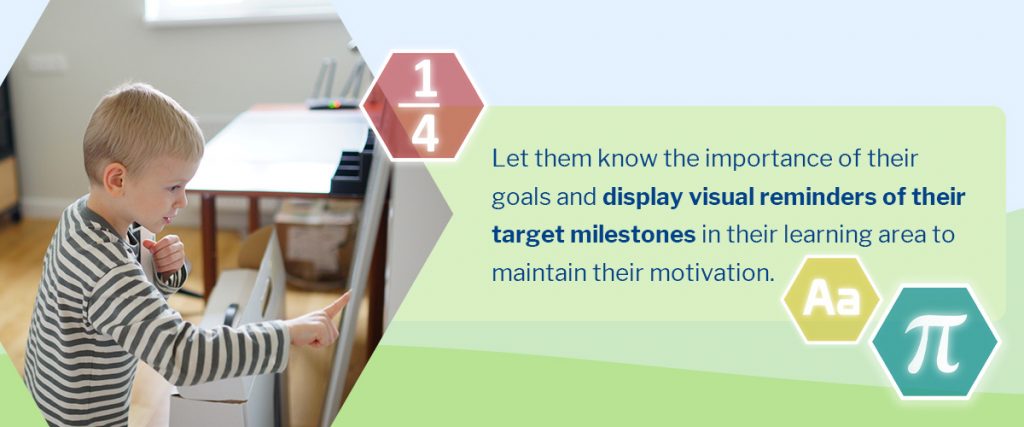Effectively homeschooling multiple children of different ages can create a peaceful and productive learning environment when you implement valuable techniques and resources. As a new homeschooling parent, you will benefit from having a consistent organization system and routine. Here’s how to homeschool students of multiple ages in nine steps.
1. Create a Daily Routine
Rather than creating a schedule in which tasks need to be completed by a particular time, create a consistent daily routine. A set schedule can usually be thrown off when certain tasks take longer than expected. The benefit of homeschooling is that you and your kids can have a flexible schedule and still get everything done.
Map out a general daily routine so everyone knows what to expect. This daily routine must be specific to your tasks and each of your homeschooled children. Consider when they are most productive and schedule them to work on their favorite subjects during this time. During their less productive times when their energy levels are low, slot in time to watch recorded video lessons or extracurricular work.
2. Establish and Rotate Learning Stations
Establish the key homeschooling areas in your house. For example, if there are only one or two computers, your children can take turns using them for lessons. While one works at the computer, you can give lessons to one of your other children at the kitchen counter or another established teaching area. It may help to have a whiteboard in this space.
You might have a separate area with a desk where your children take notes or even a fourth learning station for doing creative work. Make sure to curate their routines so that two children aren’t scheduled to be at the same station at the same time.
3. Encourage Independent Learning
As children get older, they become more independent. For example, children in fourth grade and above may only come to their teacher or parent when they need help understanding something. When your child starts high school, give them more independence by allowing them to form their own schedule and choose their subjects. At this stage, you may only need to oversee the progress being made. This gives you more time to help the younger children.
Online homeschool programs with video lessons can also help your younger children work independently when you need to complete other tasks.
4. Delegate Tasks
Delegate tasks using resources and technology provided by your child’s homeschool curriculum. Certain homeschool curricula offer online resources to help students understand topics better and lighten the load for parents. Some of these resources might include live or recorded video lessons, hands-on learning activities, podcasts and more.
This means you can let your children do certain subjects without you, helping you free up your schedule.
5. Set Realistic Goals

Take time to establish goals for each of your children. Look at their curricula and check which tasks must be completed by the end of a term, month or week. Let them know the importance of their goals and display visual reminders of their target milestones in their learning area to maintain their motivation.
Frame their routines around these goals. For example, if certain tasks need to be finished sooner, establish them as must-dos and make them the first tasks your children work on.
6. Teach Some Subjects Together
You may benefit from teaching your children together when they are close in age, but this may only work for certain subjects and activities. For example, if your children have reading assessments, science projects or art projects coming up, they can all do this during the same period with you. History, science and English are also subjects that may be taught together.
Consider shaping your routines to start and end the day together. Make sure you teach with your eldest child in mind to ensure they gain something from these lessons. Their younger siblings will always have something to gain from them.
7. Create an Organizational System
Avoid organizing all your children’s work in one place, as this may quickly cause disorganization with all the assignments your children complete throughout the year. Create a system in which each child has a shelf, basket or drawer for storing their school work. This ensures you and your children know where their work is, where to return it and how to organize it to reduce confusion around the house.
It helps to get storage carts for each child. This lets you store each child’s work separately and designate a drawer for each subject. You may even arrange them by priority if you prefer. Make sure to label each drawer and folder.
8. Use Time Blocks
Try using time blocks to create a structured yet flexible learning experience for your kids. Let’s say more than one child has a one-hour mathematics lesson at the same time — you can assign each child a 15-20-minute time block. While you spend one time block doing one-on-one teaching lessons with one child, the other will do independent math work. When time’s up, they’ll swap places or rotate, keeping lessons manageable while ensuring you give your full attention to each child.
Keep in mind that some concepts will take longer to understand. In these cases, stop at 15 minutes and give both you and your child a short break. Make sure to revisit this topic later in the afternoon. This encourages a more positive learning environment and helps prevent burnout from working too hard.
9. Build Good Habits
Another important tip for homeschooling multiple ages is to be mindful of your and your children’s well-being. Allow breaks for yourself when your mind or body needs them, and ensure your children get enough breaks, too. You should also take it easy when homeschooling while sick or pregnant.
It also helps to make some school activities off-limits during nonschool hours to prevent burnout. You can also manage energy levels better by arranging different activities every session to keep everyone refreshed. An example for one child includes starting with group learning to warm them up. They can then move on to individual note-taking sessions, lesson teaching with the parent and then a video lesson or extracurricular activity to maintain their engagement.
Get a Homeschool Curriculum for Multiple Ages With Power Homeschool
To get started on homeschooling multiple students, Power Homeschooling is an online homeschooling platform for pre-K through grade 12 students. We are the official provider of hundreds of Acellus® courses for homeschooling parents.
We provide the necessary resources to help you teach and support your children as needed. Our courses allow for flexibility and self-paced learning to help improve their engagement and academic progress. We welcome you to browse our Acellus® courses to learn more today.



